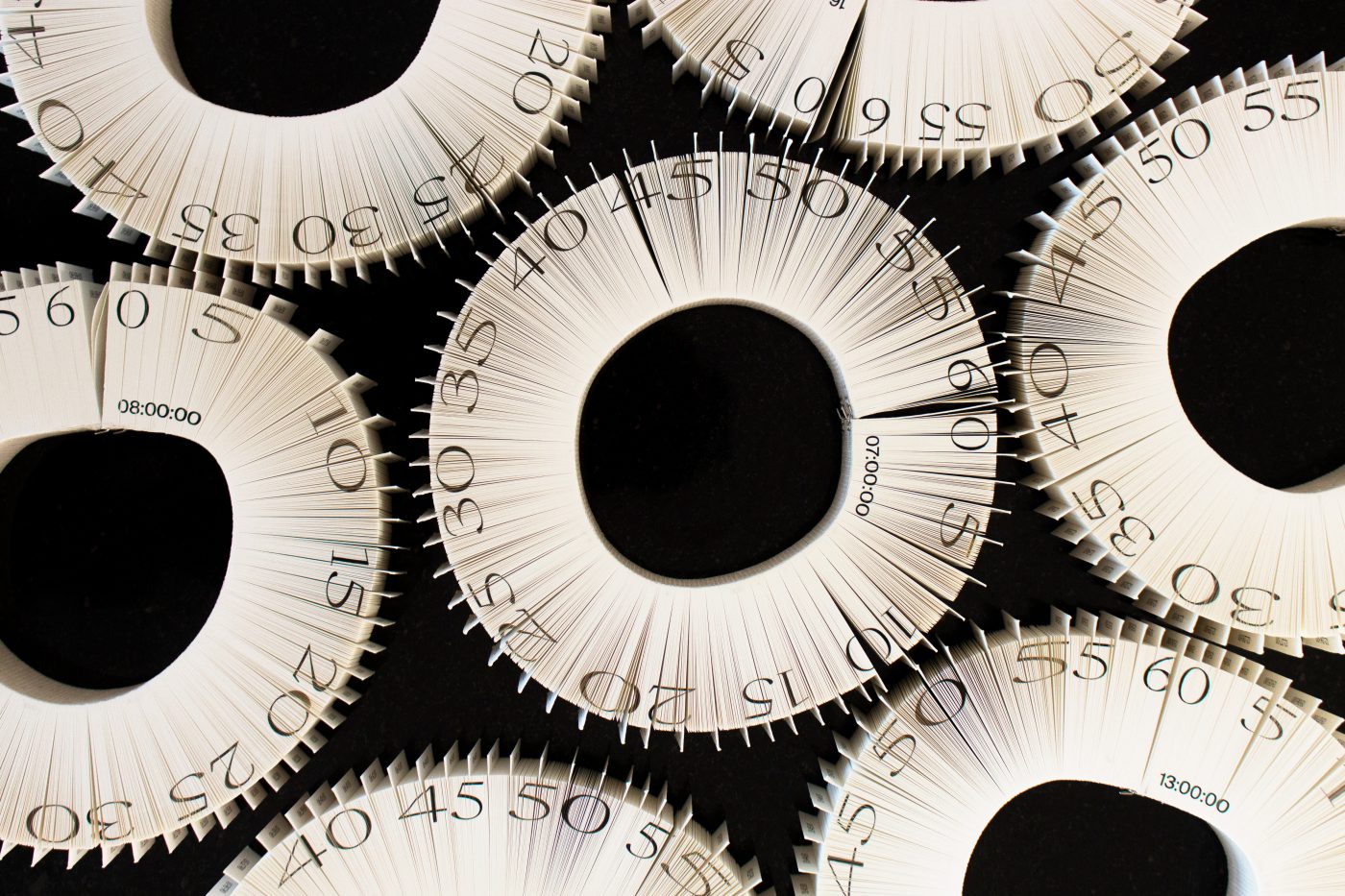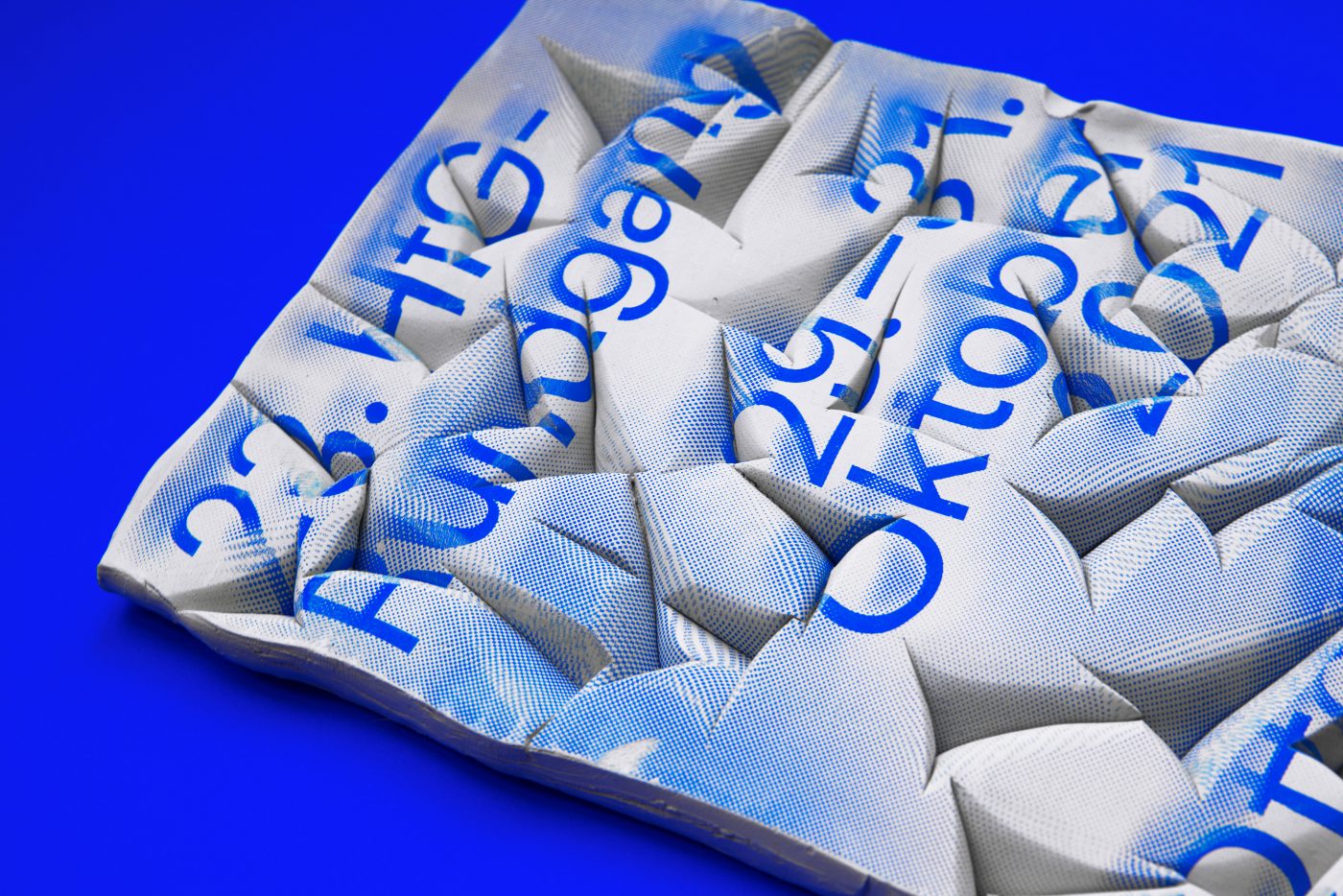TDC68 winner Laura Hilbert talks with us about her approaches to her craft, and thoughts on technology, prior to her upcoming presentation as part of inScript Experimental Type Festival.
First of all, congrats on what’s been a really spectacular year for you, in terms of recognition! How has that all felt? What, if anything, has been the biggest shift?
Thank you very much! Yes, indeed, a lot happened over the course of this year, that I hadn’t expected, but I am more than grateful for all the positive feedback and recognition. It has given me new opportunities and brought me into contact with new people. Thanks a lot to everyone who has been involved in the projects and special thanks to my graphic partner in crime for the “Hands On!” project Sarah Stendel.
Your work is irresistibly visceral and tactile. Toggling between analog and digital methods is a common form of experimentation, but your results are particular in their uniqueness. Can you talk about craft and experimentation as it’s formed your voice as a designer?
First, many thanks, I really appreciate that! So happy to hear. Experimentation has always been a great way for me to get started. When I am working on a project, I mostly switch between two types of sessions. The one where I do a lot of researching and thinking, meaning to dive deep into a topic, to then come up with ideas. And a second session where I leave out the researching and thinking part and just give myself the permission to play around and test various things until I find something that sparks my interest and could be interesting for the project. Especially analog experimentation makes you experience the process not only with your eyes but also with other senses, like touch. Research, concept development, and spontaneous experiments are all equally important to me and need to complement each other in the end. But experimentation is a key element in my process and leads to results that wouldn’t have been possible through just concept development.

You also collaborate quite a bit, including your „Hands On!“ project with Sarah Stendel. How does collaboration inform your experimental process?
The constant exchange in collaboration is very beneficial, for me as a designer and for the projects of course. You can influence each other and constantly have someone to discuss certain issues with. Everyone brings their own qualities, skills, and ideas to the project which opens new perspectives and makes the process quicker.
Are there certain processes that you find yourself drawn to again and again? Or do you need it to be new every time?
Even though I find it especially pleasing to develop new processes, it’s not that important to me that they are new. I want to find processes that are useful for a specific project and lead to results that suit my idea in the best possible way.

inScript is about type and technology, and the way the two interplay. Do you see what you do as technology? What do you see as the line between tech and craft innovation?
Technology is described as „the methods for using scientific discoveries for practical purposes“. Therefore it is not limited to digital methods, and I would say my work can still be seen as technology. Additionally, even though I am interested and fascinated by new digital technology, it doesn’t mean the final result of a project needs to use it. Often, I just get inspired by it and translate it to a different medium. I am interested in systems, I like to draw inspiration from the way how things function. In doing so, I always try to find the best possible medium and material to fit my concept, which can be digital or analog.
Any new materials or mediums you’re itching to try out? Or some failed ones that didn’t end up working at all?
The technique of printing on clay actually roots in an experiment that came to a standstill. About a year before Sarah and I created the „Hands On!“ project, I developed this technique, which, after a few tryouts already worked pretty well. I was researching data carrier and decoding software at that time. I found it interesting to „save“ information on analog and natural materials like clay. Kind of like ancient stone tablets, but with encrypted information on it like computer software uses. I wanted to screen print these informations on clay and further encrypt them via deforming the clay. The basic concept was set, but when it came to the actual information on the clay, I still wasn’t sure. It’s important to me that concept and content complement each other. I hadn’t found the right way by that time, but maybe I will revive it at some point again. But still, when Sarah and I were working on the Rundgang Identity and were looking for ways of producing the identity in an analog way, I remembered this technique I developed back then and thought it would fit our concept perfectly.
Experiments are always very useful, even though they do not have a perfect use in the moments they are made, the use might just come up later.